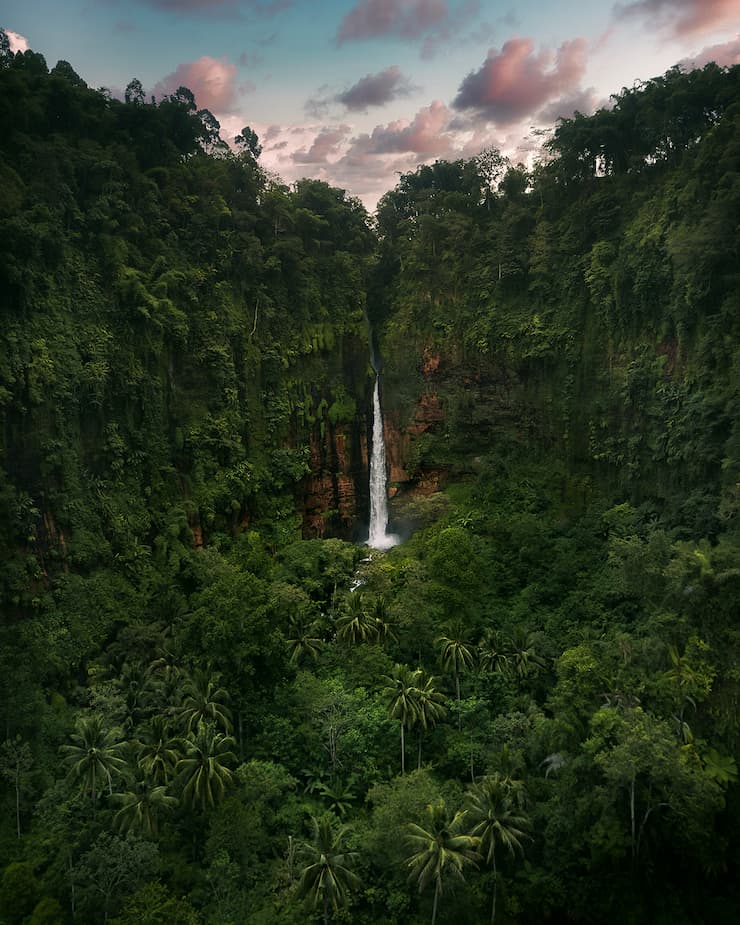
© 2020 Nomadict. All rights reserved.
I was born in a small town in the south of Portugal, and during my childhood, I automatically developed a strong connection to the outdoor world. Nature has always been a safe place where my mind and heart can feel free and heal. At the same time, I have always had a strong creative urge inside me, first channeled through music, which was later replaced by the discovery of photography, 18 years ago. Photography represented a perfect symbiosis between love for nature and love for art and creation, so I quickly got addicted to it.
I was in my second year of Med School back then, and I had to invest a lot of time into medical graduation, which in Portugal corresponds to a 6-year university degree, plus one year of generalized hospital practice and then a further 5 years working full time and becoming a specialist.
During my residency in Psychiatry, I also had the pleasure of creating a Photo Therapy project for psychiatric patients, which taught me a lot about the power of photography to channel emotions and provide opportunities for reflection and inner change.
Photography can be both used as a therapeutic tool to improve well-being and mental health, with no specific guidelines to do it, or as a tool in a formal psychotherapeutic setting coordinated by a mental health professional, directed to people with mental illness. Both approaches are based on the immense power of images to effectively communicate with our emotional core, triggering sensations, memories, feelings, thoughts, and all kinds of insights. According to most theories that study the therapeutic power of images, there is a consensus that visual inputs can quite often bypass our cognitive defenses, being able to establish a deeper connection with the self, opening doors to enhance the exploration of situations that trigger suffering, acting as a “catalyst” of deep-seated memories and emotions.
For example, the creation of my own images is definitely therapeutic to me, but they also contain a profound wish to also help others, even if it’s just to let them relax for a brief moment while they delve into the scene or, even better, to make viewers stop, watch, read, integrate, feel, and reach deeper levels of significance that will enrich their present moment.
It is obviously extremely difficult to manage both careers at the same time, but I cannot imagine one without the other, so I just try as hard as I can to keep pushing forward. When the aesthetic power of Nature meets a man’s vision of the world, creation takes place and images become the crystallized hybrid product of this encounter. Traveling and endlessly searching for the light, the silence, and the lessons of the landscape, I love to present my vision of the world as seen through my eyes and soul, hoping I can at least take others there just for a moment, to the moment which lies so intense in my memory, and that’s what really keeps me going.
I love “silence” in my landscapes, a silence which I like to see extended to the act of photographing itself. Whenever I go out to shoot, I try to look for places with no people, so that I can forget the world “out there” and focus on that world right in front of my eyes, more real, more “present”.
It was New Moon night during May of 2020, and conditions were perfect to do a long harvest of photons inside the camera, and thus reveal part of the hidden galaxy above. Even though the southern coast of Portugal has quite a bit of light pollution, I had decided I wanted to try to capture Milky Way shots in that location, combining the epic seascape views with the wonders of the night sky. I envisioned and planned this shot long before actually doing it, as I wanted to get the vertical Milky Way right above the natural arch.
Places look impressively different during the night, and this place is no exception. In the darkness, every precipice becomes more intense, and the dark loud sea down there increases the sensation of abyss right at our feet. Every step needs to be properly measured, not because of imminent danger, but due to the inner intense feeling of smallness and reverence.
When I arrived at Albandeira I had the usual hope that no one would be there shooting, but that was not the case. I had planned to once again use a lantern and light paint the dark rock, but this plan needed to be compromised, as there was already another photographer there, sitting on a portable chair, tripod set up, camera in action.
Those who are not photographers are not aware of this, but when facing such a situation we have two options: put our images above everything else, do our thing and ruin the work of others, or assume the simple fact that photographing Nature should always be made with the conscience of global respect and interconnection, which brings moral responsibilities towards everything that surrounds us.
As you might guess, it is much more frequent to find photographers who choose the first option, as we live in the era of “getting the image at all costs”. At the same time, the opportunities to create the image that I had visualized only occur a few times per year, as they need the perfect sync of a clean night sky, New Moon (or at least low luminosity moon phase), and a good Milky Way positioning. Despite this, since there was already someone shooting the spot, I asked my special diplomat and companion Adriana and her lovely smile to ask the photographer if we could do some exposures using light painting. He politely replied, filled with reason, that he was doing a long time-lapse, seizing the rare opportunity that the place had its lowest level of light pollution ever, as the nearby hotel was closed due to the pandemic.
Considering his explanation, there was nothing to argue about, and so I accepted the fact that the images I envisioned would not happen, as I would never disturb the dedicated craft of someone else capturing such a precious phenomenon. Still, I decided to stay for a while on the spot and try some long exposures, expecting to get just a bunch of unusable dark rocks. Fortunately, I was in for a big surprise, because there was actually still a good amount of subtle and indirect light bathing the rocks (as well as the usual excessive light on top of the arch, coming from a distant lamppost), which allowed me to get surprisingly good exposures, probably much better than if I had used a lantern as I had planned!
Way too many milky way images forget about the fact that the image should be considered as a whole and, if the image includes a foreground, then photographers should make sure that the foreground is part of the narrative. This makes the whole process much more difficult because getting properly exposed and interesting foregrounds during the night is much more difficult, mostly because of the technical limitations of cameras, where you often need to resort to light painting techniques on the field to be able to properly expose the details in the foreground. So, for this specific photo not only I wanted to include the classic arch of Albandeira, I also wanted a close foreground element to add interest to the composition, and create a guiding line throughout the image, so the eyes would intuitively go from the bottom to the arch and then ascend to infinity and beyond! Even though I do not use ultra-complicated editing tools and processes, I want my images to express the vision of the scene I carry inside me.
Landscape photography gave me so many gifts: it allowed me to channel my creative urges into the depiction of the natural beauty of the world and gave me the freedom of expression, translated through both my aesthetic approach to images, but also through the stories I embed on each one. Even though quite often most of the photographic process is a struggle, with endless hours of waiting, frustration with climate, physical suffering and so much time devoted to finding the best light, the truth is that there is always a deep sense of meaning for me in doing this.
Photography makes you infinitely more conscious of the world you live in, as you start seeing all its details and subtleties, not only thinking about how it would look through the viewfinder of your camera but also incorporating the world you see into yourself, crossing the boundaries of your ego and merging with the outside world.
Would you like content like this sent to your inbox?
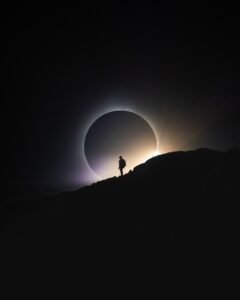
In this article, we delve into the journey of Medhi, exploring his evolution from a young creative mind in Morocco to a seasoned photographer and VFX artist making strides in Canada’s diverse landscapes. From early inspirations drawn from visual arts and travels to the professional challenges and creative triumphs encountered along the way, Medhi shares insights garnered through years of dedication to his craft.
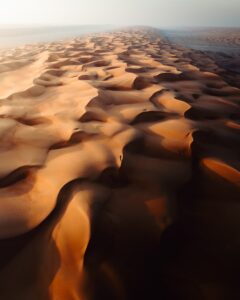
In this article featuring Witold Ziomek, we explore five essential principles for crafting powerful sunset dune photography through editing. Through a practical example, Witold shares his process of editing his award-winning photograph, alongside valuable insights he has gained as a dedicated traveler and photographer.

This article chronicles Mitchell Leong’s journey, who found solace and purpose through his lens. From the rugged expanses of the Canadian Rockies to the ethereal allure of starlit nights, each photograph tells a story of resilience, exploration, and the profound impact of the natural world. Through his lens, he seeks to bridge the gap between science and art, using photography as a tool for conservation and storytelling. Along the way, he shares invaluable lessons learned, from embracing fear to trusting in the power of storytelling.
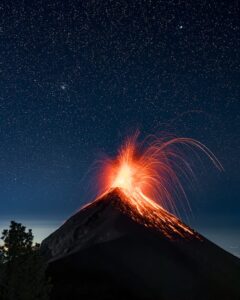
This article follows Phil’s path as a photographer, sparked by his unwavering love for exploration and ignited during post-university travels. Through his lens, we traverse Phil’s transformative journey across captivating landscapes, from the rugged beauty of the Canadian Rockies to the fiery spectacle of Volcán de Fuego in Central America, where he captured the winning shot.
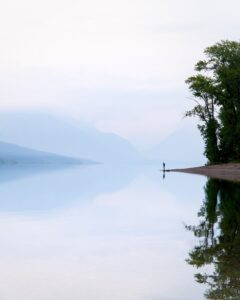
In this article, we delve into the journey of photographer Amirali, whose passion for photography was ignited amidst the challenges of academic life and the chaos of the pandemic. Through his lens, we witness Amirali’s transformative exploration of landscapes, from the serene landscapes of Finland to the mystic scenes of Montana’s nature, where he took a shot that won the Best of the Week.
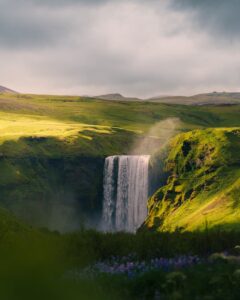
Inspired by a newfound love, Michael transforms the blank pages of his life into a vibrant canvas of nature and exploration. In this article, you can read about the profound lessons learned—from prioritizing living over routine to the art of editing and the magic of impromptu adventures—and witness the evolution of a photographer’s passion amid the breathtaking landscapes of Denmark and Europe.
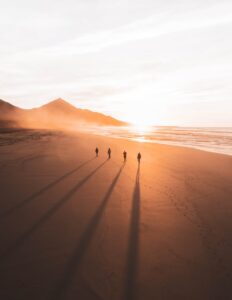
In 2017, Mathieu Morel’s first trip to Iceland marked a turning point in his photography journey. His photograph taken at Cofete Beach in Fuerteventura reflects the lessons he’s learned along the way. Thanks to the support of our community’s votes, he emerged as the winner of our weekly contest.
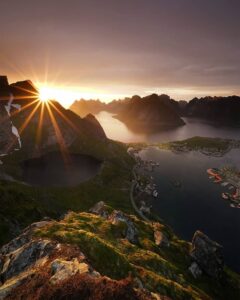
Barbara Thoeny won our weekly contest thanks to a golden hour photo in the beautiful Lofoten Islands. This article teaches us about her winning shot, passion for capturing the northern lights, and most valuable experiences as a solo traveller and photographer.
© 2020 Nomadict. All rights reserved.
